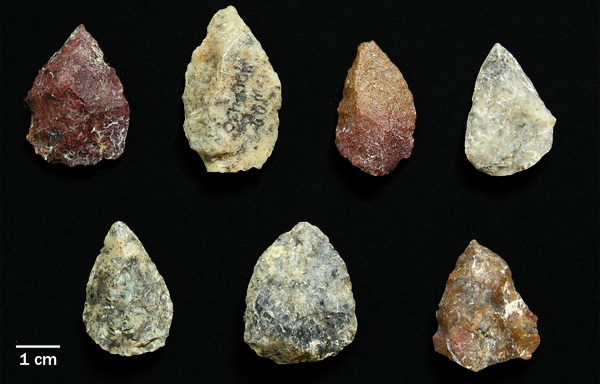The Stone Age could just as easily be called the Roam Age.

Two new studies published February 27 in the Journal of Human Evolution advance the idea that ancient people and Neandertals walked or ran far greater distances than any human groups that followed, including more recent hunter-gatherers and today’s long-distance runners. Fossils of humans and their beetle-browed evolutionary cousins display signs of extremely extended travel that occurred between roughly 120,000 and 10,000 years ago, Colin Shaw and Jay Stock, biological anthropologists at the University of Cambridge in England report in one of the studies.
Shaw and Stock conclude that the Stone Age crowd moved around considerably more than southern Africans from a few thousand years ago who hunted over an area of 5,200 to 7,800 square kilometers. Highly trained athletes today who run 130 to 160 kilometers every week come in third in this mobility comparison.
Human ancestors started wandering long distances around 1.7 million years ago (SN: 8/25/12, p. 22). The extent to which particular Stone Age species and groups roamed the landscape has been difficult to establish.
Shaw and Stock’s findings support an argument for extreme mobility among ancient people and Neandertals that has been championed over the last 15 years by Erik Trinkaus of Washington University in St. Louis and Christopher Ruff of Johns Hopkins University. Clues come from exceptionally robust leg bones, a dearth of older individuals in fossil samples suggesting that life spans were limited due to the rigors of constant travel, and an absence of skeletal injuries in excavated fossils that would have prevented vigorous movement, Trinkaus says.
Shaw and Stock used a calculation of the lower leg’s ability to withstand twisting and other forces to compare Stone Age hominids’ leg strength with that of human groups with known activity levels: varsity distance runners, varsity swimmers, non-athletic college students, Andaman Island foragers from the 1800s who swam constantly in pursuit of food, and southern African hunter-gatherers who hunted over a vast territory between 11,000 and 2,000 years ago.
Ancient human and Neandertal legs substantially overpowered those of the hunter-gatherers, who had stronger legs than the other groups. Regular swimmers brought up the rear, perhaps partly because swimming emphasizes upper- over lower-body strength, the researchers suggest.
Anthropologists don’t know what kept ancient people and Neandertals in constant motion. It could have been the hunt for spear-worthy rock, the second new study suggests. Chemical analyses of stone spear points from one southern African site indicate that silcrete spear points from 54,000 to 94,000 years ago chemically matched silcrete outcrops located more than 220 kilometers away, but not others situated only 70 kilometers away,
Rock reconnaissance missions began near the northwestern shore of an inland delta in what’s now Botswana, propose physical geographer David Nash of the University of Brighton in England and his colleagues. Journeyers headed to several rock sources just beyond the delta’s southernmost reaches.
Travel of that extent must have involved collecting both rock for spear points and game and fish possibly not available in the northern delta, Nash suggests. Or middleman groups could have collected blocks of stone and transported them partway north for trade. “We cannot say for certain what happened,” Nash says.





